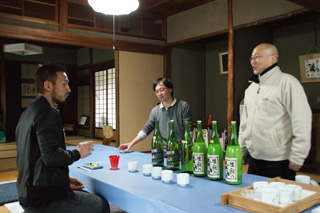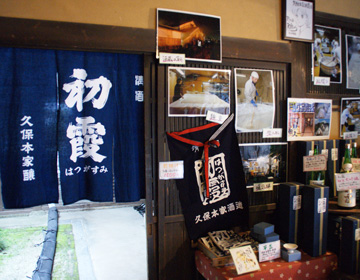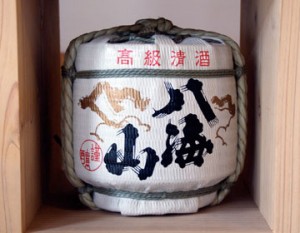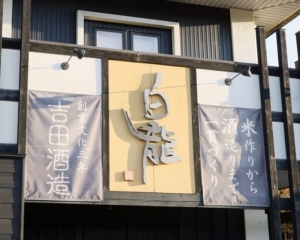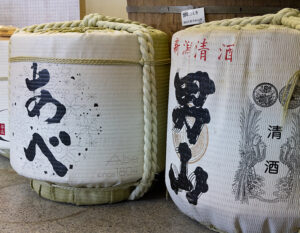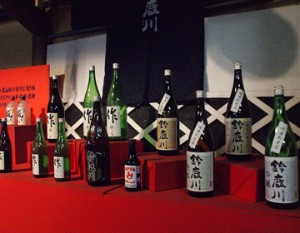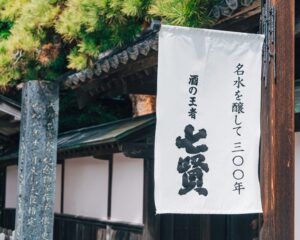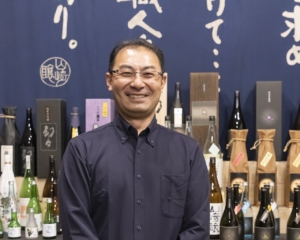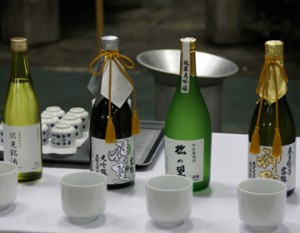Learning about making “kimoto”
One of the leading lbaels of Kubo Honke Shuzo is the ”Kimoto no Dobu”. It is white unrefined ”sake”, with full body and rich flavor which brings about a sharp sensation when swallowed. The key is the ”kimoto zukuri”. It is said that with this method, the taste and fullness becomes completely different.
So what is this ”kimoto”? During the manufacturing process of ”sake”, yeast is cultured by yeast mash. When cultivating the yeast, the tank’s lid has to be removed, admitting bacteria and natural wild yeast into the tank. To prevent this from doing harm, lactic acid is added. For this, most breweries use prepared lactic acid. However, Kubo Honke Shuzo is particular about using natural lactic acid ”bacteria” which allows the production of lactic acid to get rid of undesirable bacteria.
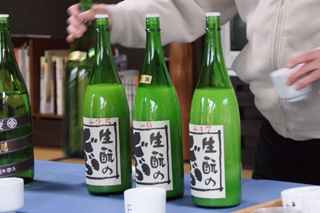
Merits and difficulty of 2kimoto zukuri”
”Kimoto zukuri” is said to be the oldest method of Japanese ”sake” production that is incorporated today. In other words, because the life-form of bacteria and yeast become stronger with this method, the strong taste is preserved even in a brewing facility which is very cold temperature wise. Also, because the yeast hardly dies out, excessive amino acids will not melt out, resulting in fine refreshing ”sake”.
However, when failure hits, it hits hard. The taste becomes acrid, making the ”sake” unfit for sale. ”Kimoto zukuri” therefore is a time-consuming process that is also risky.
Yet, Kubo Honke Shuzo is persistent with keeping this method. This is because they know as a fact that ”sake” using ”kimoto zukuri” method tastes better. Therefore they keep taking the risk, however time-consuming it may be. And of course it tastes great!
